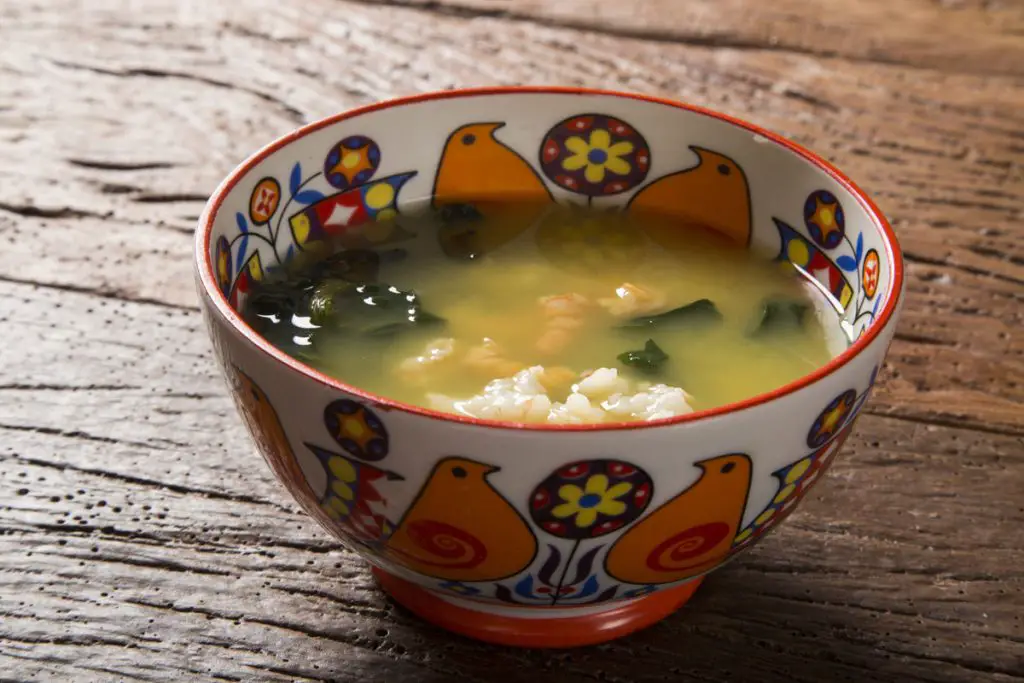Tacacá is a traditional Brazilian dish that originates from the northern region of the country, particularly in the states of Amazonas and Pará. This flavorful and aromatic soup has been a staple in the culinary heritage of the Amazon rainforest for centuries. Tacacá is known for its unique combination of ingredients, including tucupi broth, dried shrimp, jambu leaves, and goma, a type of tapioca starch. In this article, we will delve into the history and cultural significance of tacacá, explore its key ingredients, and guide you through the step-by-step process of preparing this delightful dish in your own kitchen. Get ready to embark on a culinary journey to the heart of Northern Brazil with our authentic tacacá recipe.
The History and Cultural Significance of Tacacá
Tacacá is more than just a soup; it is a symbol of Northern Brazilian culture and gastronomy. Its origins can be traced back to the Indigenous peoples of the Amazon rainforest, who used local ingredients to create nourishing and satisfying meals. Over time, tacacá became a popular street food, especially in the cities of Manaus and Belém, where it is often served by street vendors in traditional clay pots.
The cultural significance of tacacá is deeply rooted in the Amazonian way of life. It reflects the rich biodiversity of the region, as well as the fusion of Indigenous, African, and Portuguese culinary influences. Tacacá has become a culinary emblem of Northern Brazil, celebrated during festivals and gatherings as a dish that brings people together.
Key Ingredients of Tacacá
To make authentic tacacá, you will need several key ingredients that give the dish its distinct flavor and texture. Let’s take a closer look at these components:
Tucupi Broth: Tucupi is a yellowish liquid extracted from the root of the manioc plant. It is the base of tacacá and provides a tangy and slightly bitter flavor to the soup. Tucupi must be cooked thoroughly to remove any traces of cyanide, making it safe to consume.
Dried Shrimp: Dried shrimp are a common protein source in Brazilian cuisine. They add a salty and briny flavor to the soup and contribute to its unique texture.
Jambu Leaves: Jambu, also known as toothache plant or paracress, is a leafy green herb that numbs the mouth slightly when consumed. It adds a distinct tingling sensation to the soup and is an essential element of tacacá.
Goma (Tapioca Starch): Goma is used to make the tapioca pearls that thicken the soup. It provides a chewy texture and helps to bind the other ingredients together.
Seasonings: Tacacá is typically seasoned with garlic, salt, and sometimes chili peppers to add a touch of heat.
Preparing Tacacá: Step-by-Step Recipe
Now, let’s dive into the step-by-step process of making tacacá at home. While the ingredients may require some effort to procure outside of Brazil, the final result is well worth it. Here’s how to prepare this delicious Amazonian soup:
Ingredients:
2 cups tucupi broth
1 cup dried shrimp
1 cup tapioca starch (goma)
1 cup water
1 bunch of jambu leaves (substitute with spinach if unavailable)
3 cloves of garlic, minced
Salt to taste
Optional: chili peppers for added spice
Instructions:
Prepare the Tapioca Pearls (Goma): Start by making tapioca pearls, which are also known as “beiju” in Brazil. In a mixing bowl, combine the tapioca starch with a cup of water and knead the mixture until it forms a smooth, elastic dough. Roll the dough into small balls and set them aside.
Cook the Tucupi: In a large pot, bring the tucupi broth to a boil. Reduce the heat and let it simmer for at least 20 minutes to ensure that any remaining cyanide is neutralized. Skim off any foam that forms on the surface.
Add the Dried Shrimp: Once the tucupi is safe to consume, add the dried shrimp to the pot. Let them simmer in the broth for about 10-15 minutes until they become plump and tender.
Prepare the Jambu Leaves: While the dried shrimp are simmering, prepare the jambu leaves. Wash them thoroughly and remove any tough stems. Blanch the leaves in boiling water for a few seconds to soften them. Drain and set aside.
Cook the Tapioca Pearls: In a separate pot, bring water to a boil and add the tapioca pearls (goma). Cook them for about 10-15 minutes or until they float to the surface. Drain and set aside.
Season the Soup: Add minced garlic and salt to taste to the tucupi and dried shrimp mixture. If you like your tacacá spicy, you can also add chopped chili peppers at this stage. Stir well and let it simmer for a few more minutes to allow the flavors to meld.
Serve Tacacá: To serve, place a portion of cooked tapioca pearls (goma) in a bowl. Ladle the hot tucupi and dried shrimp broth over the pearls. Top the soup with blanched jambu leaves, and your authentic tacacá is ready to enjoy!
Serving and Variations
Tacacá is traditionally served in small clay pots, which not only add to its authenticity but also help to keep the soup hot. When serving, make sure to include some jambu leaves on top to provide that characteristic tingling sensation. It’s common to eat tacacá with wooden spoons, emphasizing the connection to the Amazon’s natural surroundings.
While the classic recipe is a delight in itself, there are regional variations of tacacá. In some areas, people may add grilled shrimp or fish to the soup, providing a seafood twist. Others might experiment with different seasonings or add ingredients like coconut milk to create a creamier texture.
Tacacá is more than just a dish; it’s a culinary journey to the heart of Northern Brazil. With its unique blend of flavors, including the tangy tucupi broth, briny dried shrimp, and mouth-tingling jambu leaves, tacacá is a reflection of the rich biodiversity and cultural diversity of the Amazon region. Preparing and savoring this authentic dish at home allows you to connect with the traditions and flavors of the Brazilian North.
While the ingredients for tacacá might not be readily available everywhere, the effort to source them is undoubtedly worth it. Sharing this flavorful and aromatic soup with friends and family is a wonderful way to introduce them to the vibrant culinary heritage of Northern Brazil. So, why not embark on your own culinary adventure and bring a taste of the Amazon rainforest to your kitchen with this delightful tacacá recipe?
Tacacá’s Role in Brazilian Culture
Tacacá goes beyond being just a meal; it plays a vital role in Brazilian culture, particularly in the northern regions. It is not merely food but a cultural symbol and a source of regional pride. Here’s how tacacá contributes to Brazilian culture:
Cultural Identity: Tacacá is deeply ingrained in the cultural identity of the Amazonian people. It reflects the blending of Indigenous, African, and Portuguese culinary traditions, highlighting the diverse cultural influences that have shaped the region.
Social Gatherings: Tacacá is often shared during social gatherings, festivals, and family events, strengthening bonds within communities. Preparing and enjoying tacacá together is a cherished tradition that fosters a sense of togetherness.
Street Food Culture: Tacacá is a prominent feature of Brazilian street food culture, especially in the cities of Manaus and Belém. Street vendors, known as “tacacazeiras,” serve this dish to locals and tourists alike, making it an accessible and beloved part of everyday life.
Cultural Festivals: Tacacá is prominently featured in cultural festivals and gastronomic events in the Amazon region. Festivals like the Tacacá Festival in Manaus celebrate the dish’s cultural significance, attracting food enthusiasts from all over.
Where to Find Tacacá Ingredients
While some of the key ingredients for tacacá may be challenging to find outside of Brazil, with a little effort and exploration, you can locate suitable substitutes. Here are some tips on where to find these ingredients:
Tucupi Broth: Tucupi can be found in some international or Latin American grocery stores. Alternatively, you can prepare it at home using cassava roots, but be sure to follow safety precautions to remove any cyanide.
Dried Shrimp: Dried shrimp can often be found in well-stocked Asian or Latin American grocery stores. You can also explore online retailers or seafood markets for sourcing them.
Jambu Leaves: Jambu leaves might be the most challenging ingredient to find outside of Brazil. Consider looking for substitutes like spinach or watercress, which can provide a similar texture and freshness.
Tapioca Starch (Goma): Tapioca starch, also known as tapioca flour or cassava flour, is more widely available. Many grocery stores carry this ingredient, and it’s also commonly found in gluten-free sections.
Tacacá is a culinary treasure that offers a taste of the Amazon rainforest and the rich cultural diversity of Northern Brazil. Its unique blend of flavors and cultural significance make it a must-try dish for food enthusiasts and travelers alike. While sourcing some ingredients may require extra effort, the experience of preparing and savoring authentic tacacá is an adventure in itself. So, take a step into the heart of Brazilian cuisine, and let the flavors of tucupi, dried shrimp, and jambu leaves transport you to the vibrant and diverse culinary world of Northern Brazil.




